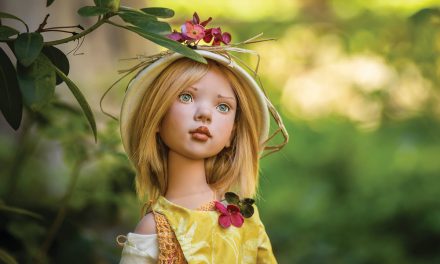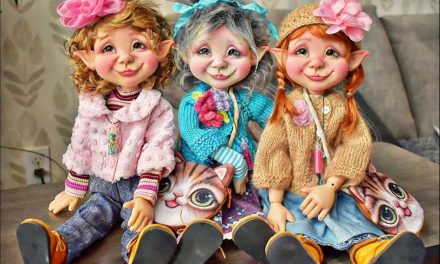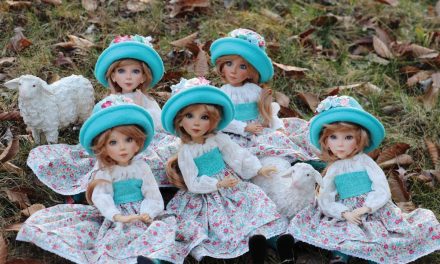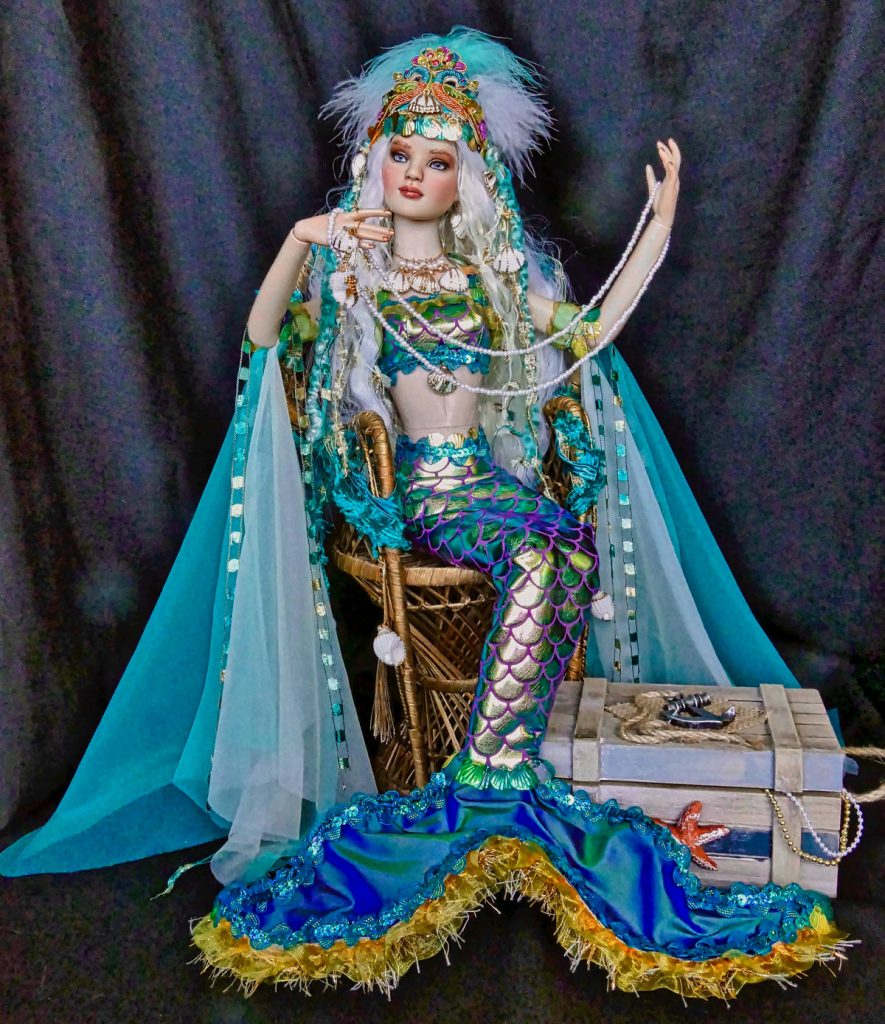
Given the quality of her work, award-winning doll artist Kathleen Hill could easily transition to designing costumes for film and television. Her lavish doll gowns and splendid accessories would look right at home on the stars of Downton Abbey and other period dramas. For now, however, Hill remains dedicated to making intricate, one-of-a-kind creations for her original dolls and her beautifully repainted vinyls and porcelains.
“I have always had an interest in fashion — both past and present — and each can give me inspiration for a piece of costume or color combination. Inspiration comes from different avenues but generally from the historical fashion and museum collection books in my extensive library,” the Nipomo, California, artist said. “Also, a piece of donated or purchased antique lace, a hat, or fabric in my collection will inspire a particular design. I received a beautiful ivory silk satin Italian bedspread from a 1940s wedding gift. It was donated to me from the owner’s daughter to repurpose on my dolls. I made two Edwardian bride doll gowns with this fabric, never intending to sell them.”
Hill began her professional association with dollmaking in 1988. She started by offering reproduction porcelain lady dolls. In the 1990s, she progressed to creating her own original porcelains, which included prototypes for a mass-production doll company. “Around 2005, I began repainting vinyls due to a combination of factors, including the economy and several surgeries that made the handling of heavy plaster molds more challenging.” (Robert Tonner dolls are Hill’s preference for vinyl recostuming, repainting, and re-imagining.)
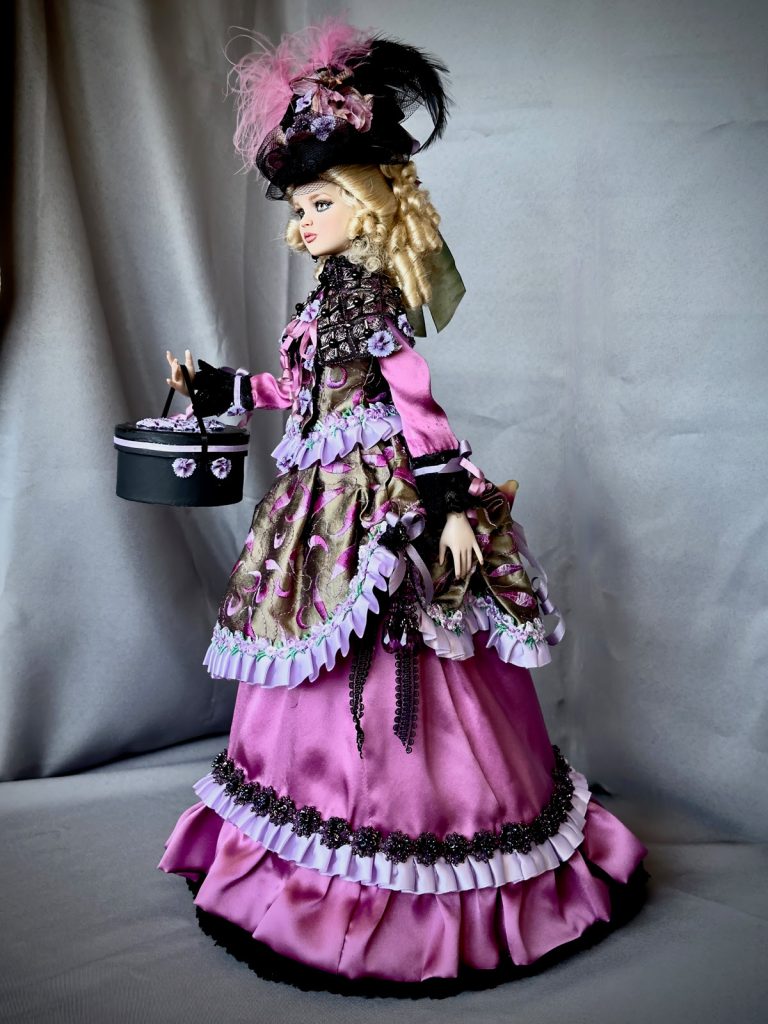
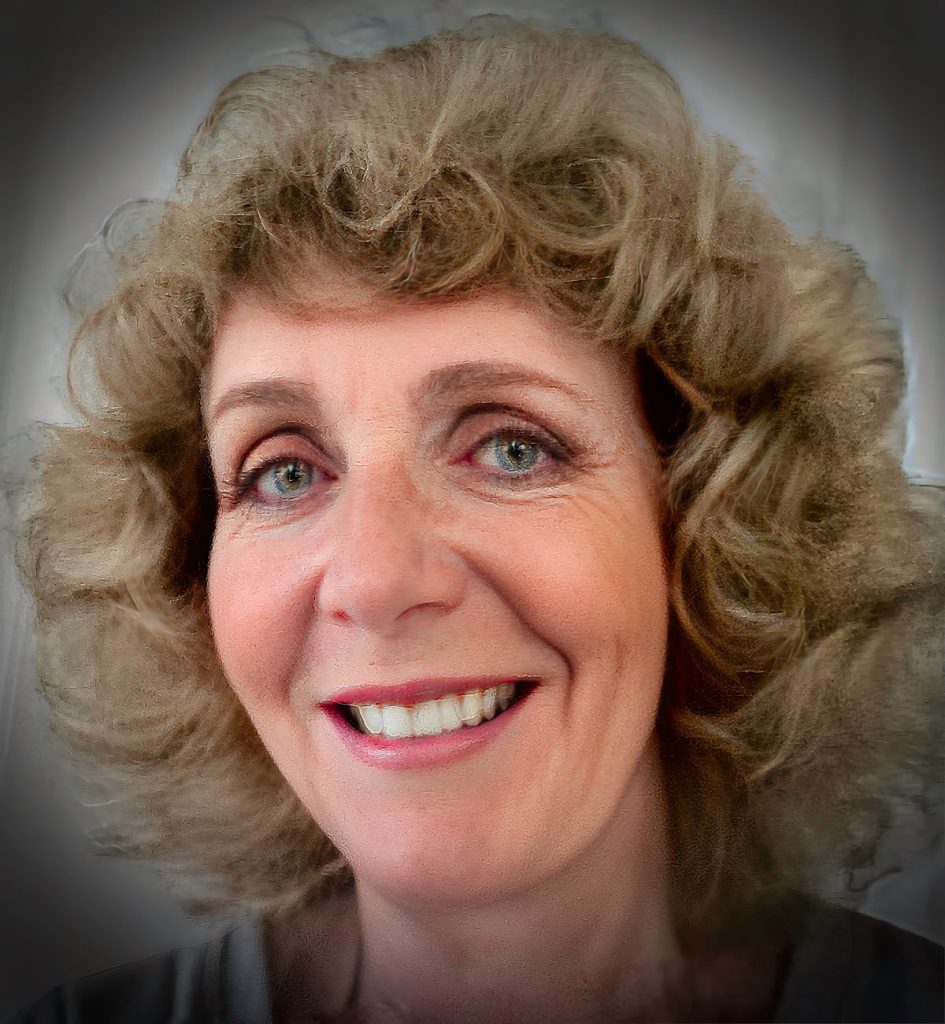
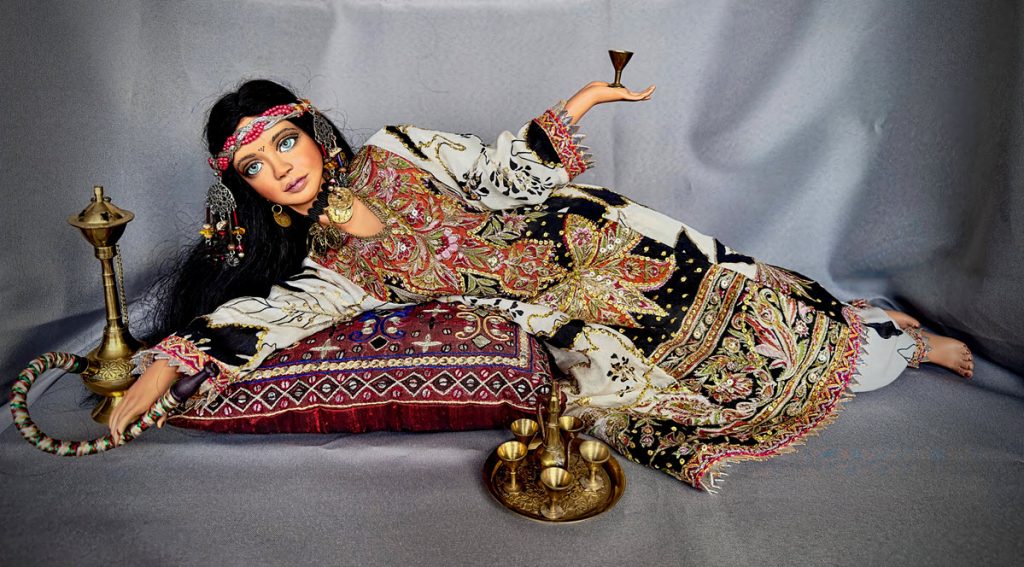
Prior to her immersion into the doll realm, the U.K.-born Hill had a thriving, successful career in medicine. She was a leading technologist/dosimetrist in radiation oncology for several decades. Hill said, “Fortunately, with reciprocal agreements in many countries, I was able to easily obtain a visa to practice in the United States. Since there were no training programs in the U.S. at that time, we were imported from the U.K. and Australia. Interestingly, I believe my knowledge of anatomy gave me a successful advantage in my original sculpting area.”
Working in a field that was so intellectually and emotionally charged — treating cancer patients — Hill sought a respite from the demanding profession. She gravitated to dancing, but with her self-described “extroverted and colorful personality,” she did not confine herself to foxtrots or waltzes in a ballroom. She said, “I became a belly dancer. I joined a troupe and danced in a Moroccan restaurant in the evenings. My immersion into Middle Eastern culture had a big influence on my ethnic porcelain and vinyl creations. I used leftover pieces of fabric, trims, and coins to make the dolls’ costumes. You know, my love of dolls began with a gift of a Spanish doll from my aunt’s travels when I was a young child. My foreign doll collection has mushroomed over the years.”
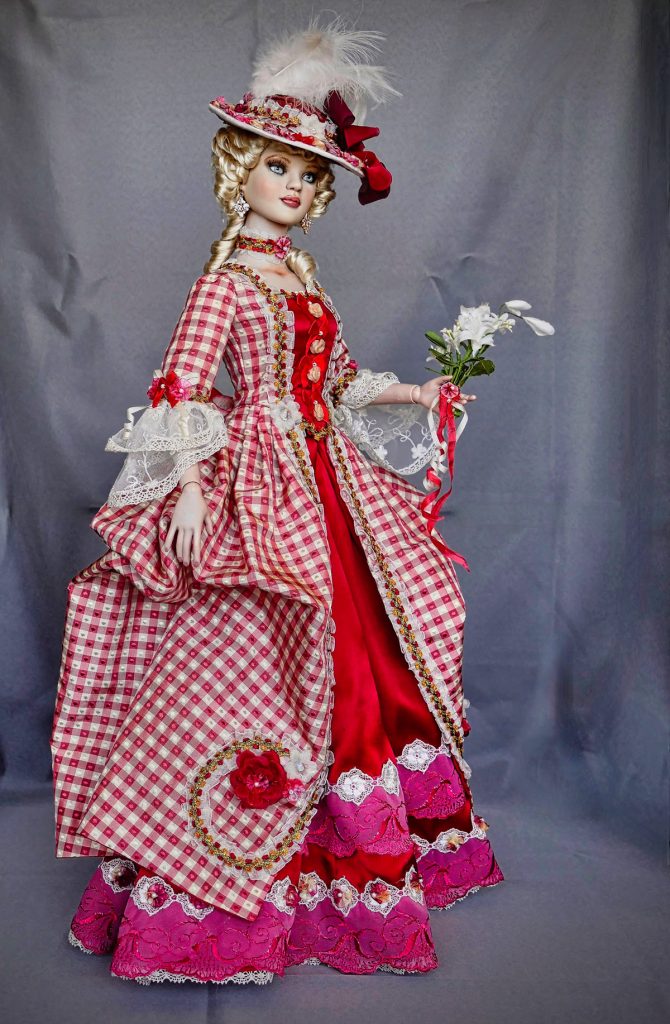
Pursuing the unexpected is a hallmark of Hill’s whole life. Her immigration to the U.S. happened when she was 23 years old because she “had an adventurous spirit and was ready to travel the world.” She has never been content to do what is conventional and mundane. She even forged another successful identity beyond her medical career, saying, “I returned to school for an MBA, which led to my being a marketing product manager for Linear Accelerators.” Once again, this professional choice had a positive impact on her doll pursuits. “The experience I gained in trade shows, customer interaction, and product marketing helped me to refine my skills in presenting and selling my dolls.”
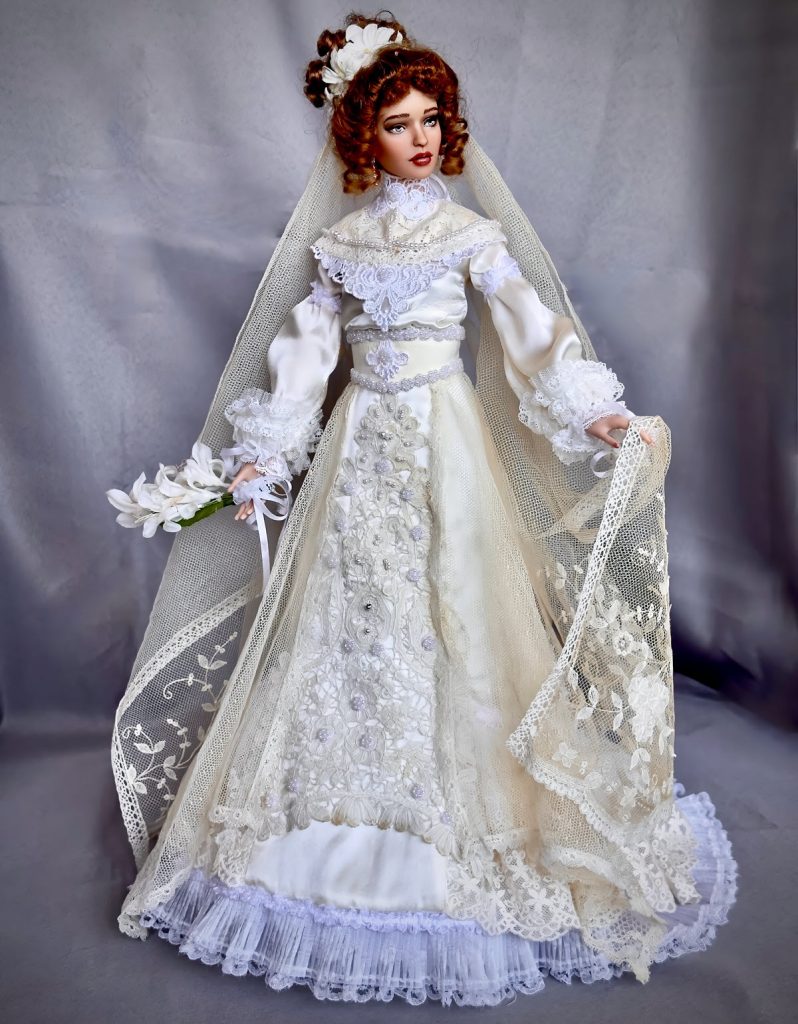
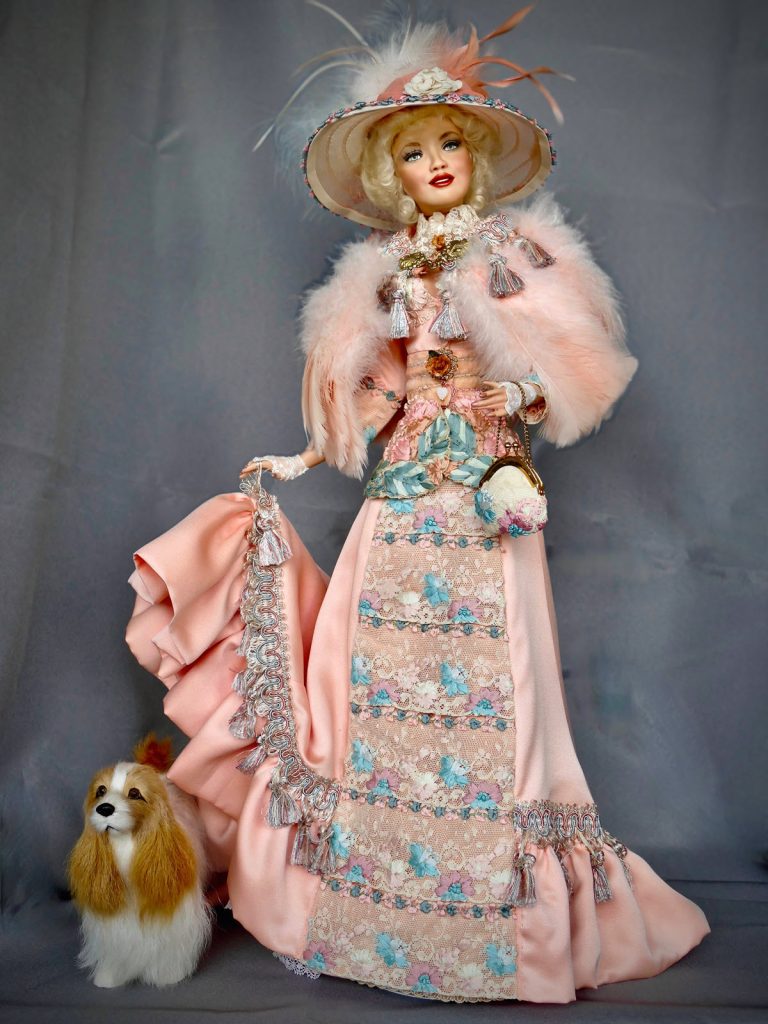
Hill’s dolls are instantly recognizable because of their cinematic elegance and gorgeous garments. According to Hill, her dolls hold an undeniable appeal to collectors who seek historical accuracy combined with dramatic detailing. “The small details, such as the underwear, shoes, and accessories, add to the dolls’ appeal,” she said. “If the vinyl dolls, for example, have inset eyes, I always remove them and insert new soft glass eyes for realism and to complement their outfits. When I do add accessories to the dolls — the purses, hatboxes, parasols, or fans — these give their costumes additional emphasis on what their activity might be, whether it is at a ball, traveling, or on the promenade.”
When Hill sculpts her dolls and drapes them in her amazing ensembles, she brings a world of imagination and wealth to life. “My historical dolls have such elaborately decorated costumes that I envision them living very entitled lives, not doing any ‘work,’ but reveling in lives of luxury,” Hill said. “These dolls are testaments to a creativity and talent that I never realized until later in my life. Sculpting my originals gave me added confidence in my artistic abilities and convinced me that I could approach any challenge.”
The rest of this article can be seen only by paid members who are logged in.Have a website login already? Log in and start reading now.
Never created a website login before? Find your Customer Number (it’s on your mailing label) and register here.
JOIN HERE
Still have questions? Contact us here.


